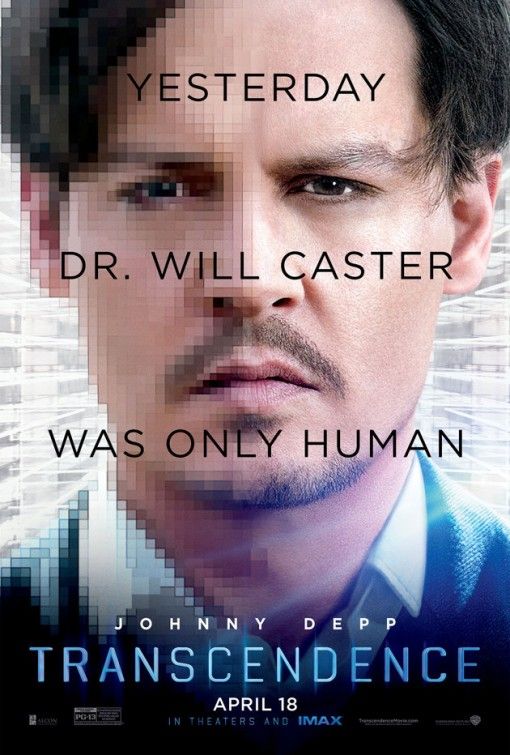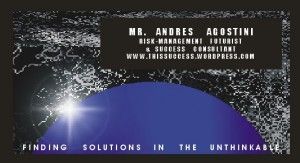Archive for the ‘fun’ category: Page 2
Oct 26, 2016
The Beauty and Total Illegibility of Extreme Metal Logos — By Liz Stinson | WIRED
Posted by Odette Bohr Dienel in categories: fun, media & arts
“Christophe Szpajdel, a Belgian designer who has crafted more than 7,000 logos for bands since the 1980s, explains that, just like any other form of design, a good metal logo relies on basic principles like symmetry, visual harmony, letter height, and precision.”
Tag: design
Sep 28, 2016
‘Uber for yoga’ app brings instructors to you | Fox News
Posted by Odette Bohr Dienel in category: fun
“A new mobile app being dubbed as “Uber for yoga” allows users to request a yoga teacher at their whim, hailing one who will come to their home or office whenever they want to practice.”
Tag: Yoga
Jul 12, 2016
Meet Tao Porchon-Lynch, The World’s Oldest Yoga Instructor | CBS New York
Posted by Odette Bohr Dienel in category: fun
““I wake up and I say ‘This is going to be the best day of my life,” Lynch said. “I never put anything negative in my mind, so I start off by smiling at life.””
Tag: Yoga
May 27, 2016
Techies seek refuge from devices — By Wendy Lee | San Francisco Chronicle
Posted by Odette Bohr Dienel in category: fun
“This summer, more than 2,000 people, many of them employees of the Bay Area’s tech giants and startups, will participate in six Camp Grounded events in California, New York, North Carolina and Texas as a way to reconnect with fellow human beings without a laptop, smartphone or Apple Watch.”
Jun 12, 2015
So, Uber Just Released Its Own Videogame — Davey Alba Wired
Posted by Seb in categories: business, entertainment, fun, media & arts, transportation

Uber, the multibillion-dollar on-demand rides company, wouldn’t be able to execute its global grand plan without the million drivers who have offered rides on its platform. Over the past five years, the company has relied on myriad tactics to lure new drivers in and keep them happy: rallies, ads, word-of-mouth, even a quarterly magazine. Now it’s trying another strategy: a videogame.
The company today released UberDRIVE, an iOS game that essentially mimics what it’s like to drive for Uber. Players “pick up” passengers and drive them from point A to point B. The more efficient the route they choose, the more points they can rack up in the game. If players earn consistently high ratings, they can unlock new cars and explore new areas of the city. The game also includes fun facts on important landmarks in the city, as well as a “trivia mode” where riders quiz drivers (the player) on certain destinations on the map. At launch, the game only includes a virtual San Francisco, though it’s available to play nationwide. If the game is successful, Uber says it will add new cities to the app soon. Read more
May 15, 2015
Virtually Human — A Transhumanist Poem by Veronika Lipinska
Posted by Steve Fuller in categories: entertainment, fun, robotics/AI
What follows is a work of transhumanist poetry by the Anglo-Polish lawyer, Veronika Lipinska, Lifeboat Foundation advisory board member and Steve Fuller’s co-author of The Proactionary Imperative: A Foundation for Transhumanism (Palgrave, 2014). The Polish sources of transhumanism remain underexplored, but they range across theology and literature. The ‘Polish Brethren’ were a radical 16–17th century Protestant sect who hosted the heretic Fausto Sozzini — the model for Faust — who laid the theological groundwork for such characteristic Enlightenment religious doctrines as Unitarianism and Deism, both of which posited a more immediate connection between the human and the divine than the established churches found comfortable. In more recent times, most transhumanists will be familiar with the science fiction of Stanislaw Lem, but still more recently the 1980 Nobel Prize winner for Literature, Czeslaw Milosz, has penned a poem, ‘After Enduring’, dedicated to cosmologist Frank Tipler’s efforts to infer Christian eschatology from the physics of the Singularity. This poem is a modest follow-up for a new generation.
Virtually human
He played with my head
Got me hardwired
Connected me to the world
And now I can see everything
Continue reading “Virtually Human -- A Transhumanist Poem by Veronika Lipinska” »
Jan 4, 2015
New Book: An Irreverent Singularity Funcyclopedia, by Mondo 2000’s R.U. Sirius.
Posted by Rob Chamberlain in categories: 3D printing, alien life, automation, big data, bionic, bioprinting, biotech/medical, complex systems, computing, cosmology, cryptocurrencies, cybercrime/malcode, cyborgs, defense, disruptive technology, DNA, driverless cars, drones, economics, electronics, encryption, energy, engineering, entertainment, environmental, ethics, existential risks, exoskeleton, finance, first contact, food, fun, futurism, general relativity, genetics, hacking, hardware, human trajectories, information science, innovation, internet, life extension, media & arts, military, mobile phones, nanotechnology, neuroscience, nuclear weapons, posthumanism, privacy, quantum physics, robotics/AI, science, security, singularity, software, solar power, space, space travel, supercomputing, time travel, transhumanism
Quoted: “Legendary cyberculture icon (and iconoclast) R.U. Sirius and Jay Cornell have written a delicious funcyclopedia of the Singularity, transhumanism, and radical futurism, just published on January 1.” And: “The book, “Transcendence – The Disinformation Encyclopedia of Transhumanism and the Singularity,” is a collection of alphabetically-ordered short chapters about artificial intelligence, cognitive science, genomics, information technology, nanotechnology, neuroscience, space exploration, synthetic biology, robotics, and virtual worlds. Entries range from Cloning and Cyborg Feminism to Designer Babies and Memory-Editing Drugs.” And: “If you are young and don’t remember the 1980s you should know that, before Wired magazine, the cyberculture magazine Mondo 2000 edited by R.U. Sirius covered dangerous hacking, new media and cyberpunk topics such as virtual reality and smart drugs, with an anarchic and subversive slant. As it often happens the more sedate Wired, a watered-down later version of Mondo 2000, was much more successful and went mainstream.”
Read the article here >https://hacked.com/irreverent-singularity-funcyclopedia-mondo-2000s-r-u-sirius/
May 10, 2014
What to make of the film ‘Transcendence’? Show it in classrooms.
Posted by Steve Fuller in categories: 3D printing, augmented reality, bionic, computing, cyborgs, disruptive technology, existential risks, fun, futurism, homo sapiens, human trajectories, innovation, nanotechnology, philosophy, posthumanism, privacy, robotics/AI, science, singularity, transhumanism

I recently saw the film Transcendence with a close friend. If you can get beyond Johnny Depp’s siliconised mugging of Marlon Brando and Rebecca Hall’s waddling through corridors of quantum computers, Transcendence provides much to think about. Even though Christopher Nolan of Inception fame was involved in the film’s production, the pyrotechnics are relatively subdued – at least by today’s standards. While this fact alone seems to have disappointed some viewers, it nevertheless enables you to focus on the dialogue and plot. The film is never boring, even though nothing about it is particularly brilliant. However, the film stays with you, and that’s a good sign. Mark Kermode at the Guardian was one of the few reviewers who did the film justice.
The main character, played by Depp, is ‘Will Caster’ (aka Ray Kurzweil, but perhaps also an allusion to Hans Castorp in Thomas Mann’s The Magic Mountain). Caster is an artificial intelligence researcher based at Berkeley who, with his wife Evelyn Caster (played by Hall), are trying to devise an algorithm capable of integrating all of earth’s knowledge to solve all of its its problems. (Caster calls this ‘transcendence’ but admits in the film that he means ‘singularity’.) They are part of a network of researchers doing similar things. Although British actors like Hall and the key colleague Paul Bettany (sporting a strange Euro-English accent) are main players in this film, the film itself appears to transpire entirely within the borders of the United States. This is a bit curious, since a running assumption of the film is that if you suspect a malevolent consciousness uploaded to the internet, then you should shut the whole thing down. But in this film at least, ‘the whole thing’ is limited to American cyberspace.
Before turning to two more general issues concerning the film, which I believe may have led both critics and viewers to leave unsatisfied, let me draw attention to a couple of nice touches. First, the leader of the ‘Revolutionary Independence from Technology’ (RIFT), whose actions propel the film’s plot, explains that she used to be an advanced AI researcher who defected upon witnessing the endless screams of a Rhesus monkey while its entire brain was being digitally uploaded. Once I suspended my disbelief in the occurrence of such an event, I appreciate it as a clever plot device for showing how one might quickly convert from being radically pro- to anti-AI, perhaps presaging future real-world targets for animal rights activists. Second, I liked the way in which quantum computing was highlighted and represented in the film. Again, what we see is entirely speculative, yet it highlights the promise that one day it may be possible to read nature as pure information that can be assembled according to need to produce what one wants, thereby rendering our nanotechnology capacities virtually limitless. 3D printing may be seen as a toy version of this dream.
Now on to the two more general issues, which viewers might find as faults, but I think are better treated as what the Greeks called aporias (i.e. open questions):
Continue reading “What to make of the film 'Transcendence'? Show it in classrooms.” »
Feb 6, 2014
The Future of Scientific Management, Today!
Posted by Andres Agostini in categories: 3D printing, asteroid/comet impacts, automation, big data, biological, bionic, bioprinting, biotech/medical, bitcoin, business, chemistry, climatology, complex systems, computing, cosmology, counterterrorism, cybercrime/malcode, cyborgs, defense, driverless cars, drones, economics, education, energy, engineering, entertainment, environmental, ethics, events, evolution, existential risks, exoskeleton, finance, food, fun, futurism, general relativity, genetics, geopolitics, government, habitats, hardware, health, homo sapiens, human trajectories, humor, information science, innovation, law, law enforcement, life extension, lifeboat, media & arts, military, mobile phones, nanotechnology, neuroscience, nuclear energy, nuclear weapons, open access, open source, particle physics, philosophy, physics, policy, polls, posthumanism, privacy, robotics/AI, science, scientific freedom, security, singularity, space, supercomputing, surveillance, sustainability, time travel, transhumanism, transparency, transportation, treaties, water
FEBRUARY 08/2014 LIST OF UPDATES. By Mr. Andres Agostini at The Future of Scientific Management, Today! At http://lnkd.in/bYP2nDC

MITRE-Harvard nanocomputer may point the way to future computer miniaturization
http://www.kurzweilai.net/mitre-harvard-nanocomputer-may-poi…turization
New form of graphene allows electrons to behave like photons
http://www.kurzweilai.net/new-form-of-graphene-allows-electr…ke-photons
The first flexible, transparent, and conductive material
http://www.kurzweilai.net/the-first-flexible-transparent-and-conductive-material
Adidas Says Under Armour Infringed Its Wearable-Tech Patents
http://www.businessweek.com/articles/2014-02-05/adid…ch-patents
Continue reading “The Future of Scientific Management, Today!” »

![LOGOS_Top Picks[1].pdf](https://lifeboat.com/blog/wp-content/uploads/2016/10/slayer-1024x767.jpg)











